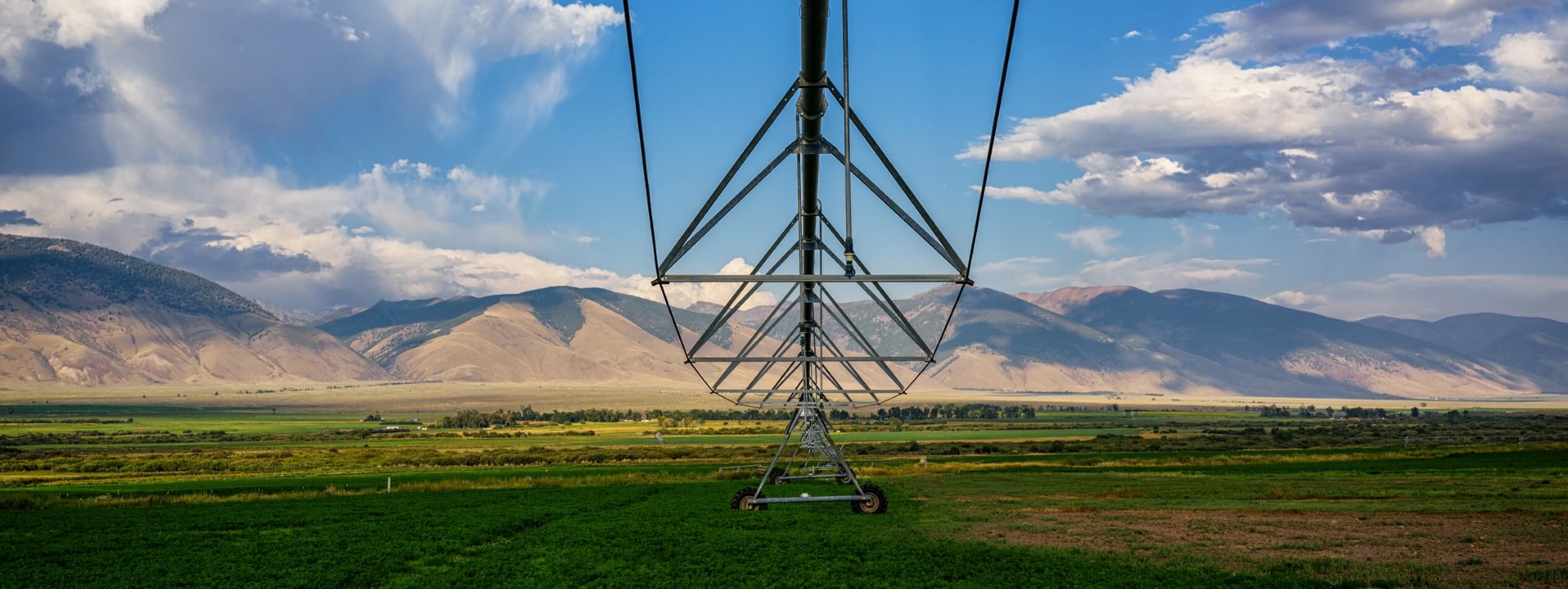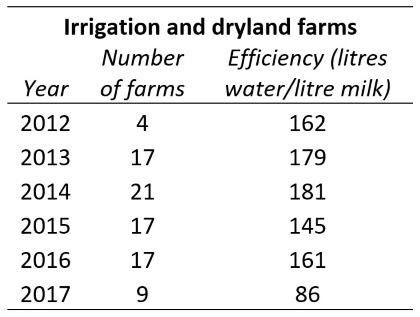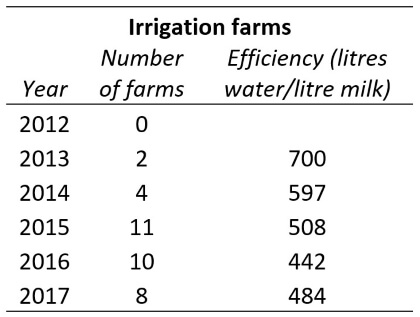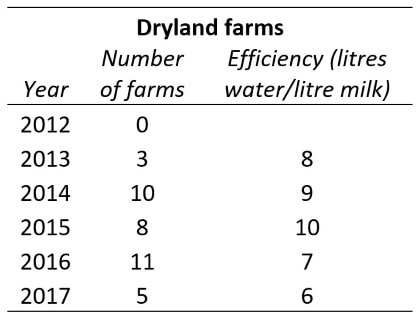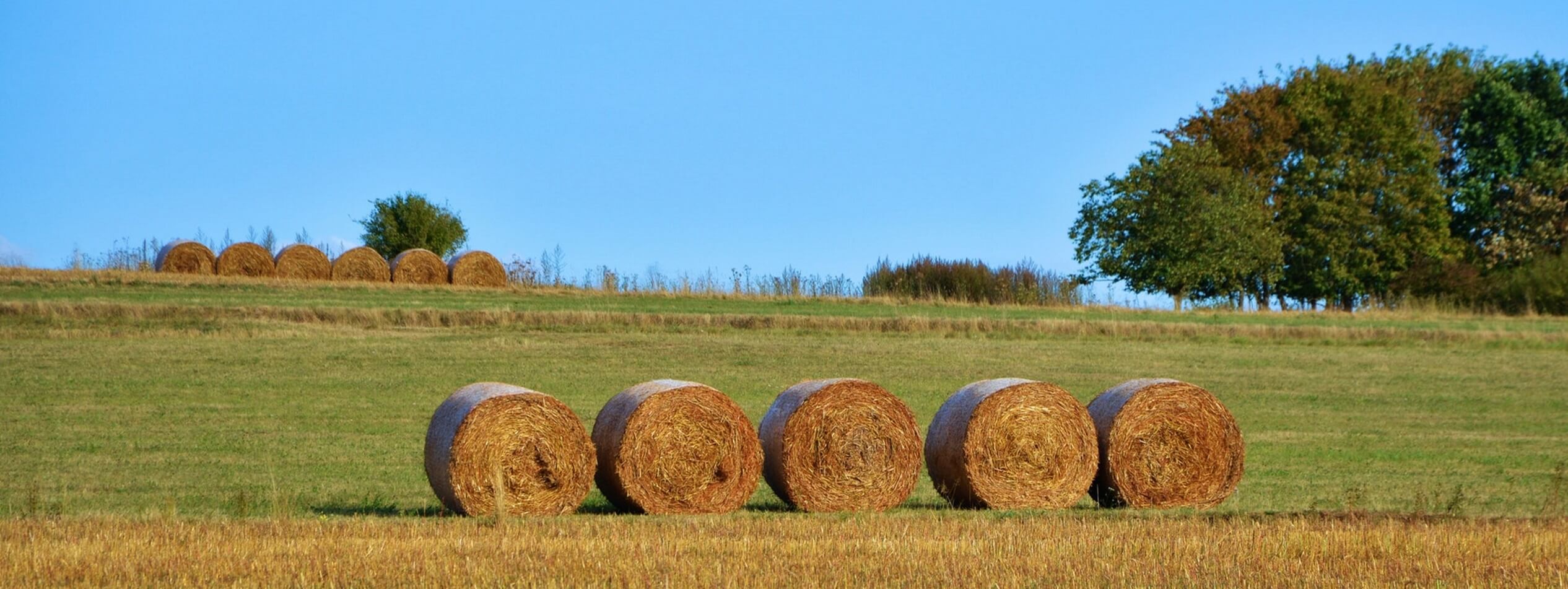The first, and most important answer to this question is: it is not as straightforward as you might think. I know this seems like a bit of a cop-out, but I will hopefully explain why it is not through this blog.
A figure that I often hear quoted is that it takes 1000 litres of water to produce a litre of milk. This is a lot of water! I completely understand why anyone has an issue with this, especially in a water scarce country like South Africa.
I have some issues with this figure though. Firstly, it gives no indication of where the water is being used. Secondly, there are large differences in dairy farm systems and how much water they use. Thirdly, it is perceived to be a definitive statement of water requirements for milk production and does not take into account that there are efficient farmers using less than this.
There are two commonly used methods of measuring water use: 1) a water use efficiency, and 2) a water footprint. A water use efficiency is a basic measure of the total amount of water used relative to an amount of product. A water footprint is an assessment of the impact of farming practices on water use, both in terms of extraction of fresh water and pollution of fresh water sources.
When asking how much water is used to produce a litre of milk, it is important that we are clear which measure we are using. A basic product water use efficiency accounts for all the irrigation water, animal drinking water, and water used to wash the dairy and yard on a dairy farm. This is the water under a farmer’s direct control. A water footprint considers the extent to which waste water impacts on water resources and includes rainfall in the measurement.
The main reason Trace & Save has chosen to use water use efficiency as a measure up to this point, as opposed to doing a water footprint, is that we choose to first focus on the aspects which a farmer has control of.
Farmers cannot control how much rainfall there is, but they can control how effectively they irrigate their pastures and crops. The rainfall on farms is also one of the sources of irrigation water, so taking rainfall and irrigation into account can often result in double accounting.
Most dairy farmers re-use the waste water they produce as irrigation water on their pastures, thereby limiting the impact of this waste water. It is therefore not fair to include the amount of fresh water needed to dilute the impact of this waste water in a calculation, as this is not what happens in practice.
Taking all this into account, we can now go about answering the original question. Trace & Save measures sustainability parameters on a diversity of farms, therefore it is best to split the farms into three groups. Firstly, full irrigation farms, where all pastures are grown using irrigation. Secondly, irrigation and dryland farms, where there is a combination of both irrigated and dryland pastures. Thirdly, dryland farms, where all the pastures are drylands.
Now that the distinction has been made, we can look at the available evidence. The tables below show the water use efficiencies of the different farms which Trace & Save has collected data from over the past five years. These are all pasture-based dairy farms in the Eastern Cape.
The water use efficiency varies greatly between farm systems. The weighted average water use across all farms was 234 litres of water per litre of milk produced. This ranges from 8 litres on dryland farms, to 160 litres on irrigation and dryland farms, to 505 litres on irrigation only farms.
The water use efficiency varies from farm to farm. Certain farmers use water more efficiently than other farmers. The season also matters, as due to the drought conditions of the past three years, there has been less irrigation water available, so farmers have used less water.
There is one large water use which is not accounted for in this calculation, and that is the water used to grow the feed for the cows which is brought onto the farm.
Using an estimate of 1 310 litres of water for every kilogram of concentrates fed1, and 600 litres for every kilogram of roughage fed (this is a very rough estimate as there is no accurate data for South Africa), I calculated the average contribution of this water. The average results in an additional 677 litres of water per litre of milk.
The average water use across farms is therefore 911 litres of water per litre of milk. This is actually quite close to the often quoted 1 000 litre figure. The main point I would like to make though is that the water use efficiency varies between the different farm systems.
The average water from feed on the irrigated farms is 729 litres, making the average total water use efficiency 1 234 litres of water per litre of milk.
On irrigation and dryland farms the water from feed was 632 litres, making the average total water use efficiency 792 litres of water per litre of milk.
On dryland only farms the water from feed was 749 litres, therefore making the average total water use efficiency 757 litres of water per litre of milk.
The water use efficiency also varies between farms. The farms with the best water use efficiencies for irrigated, irrigated and dryland, and dryland farms were 667, 497 and 431 litres of water per litre of milk respectively. These farms show us what is possible through effective water use.
I am in no way making a claim that these are rigorous or robust measures of water use on pasture-based dairy farms in South Africa, but there is a significant lack of any other direct measures. The range in water use efficiencies over the various years, and between the different farm systems is evidence that this is not a straightforward topic.
It is also evident that on most farms most of the water associated with milk production is taking place on the farms where feed is grown. One of the ways in which dairy farmers can reduce their water use is to limit the amount of feed they buy, which can be done by optimising the growth of on-farm feed and fully utilising this feed. Another way will be for the feed producers to also improve the water use efficiencies of their crops.
There are still many unanswered questions about the efficiency of water use in milk production in South Africa, and continual research should be done in getting to more accurate answers.
Trace & Save is committed to assisting farmers to be good water stewards, both in terms of using water efficiently in milk production and in conserving water resources.
References:
- Based on the average m3/ton of grain (maize, wheat, sorghum, barley, oats) in South Africa. Mekonnen MM and Hoekstra AY. 2011. The green, blue and grey water footprint of crops and derived crop products. Hydrology and Earth System Sciences 15(5):1577-1600.
- A carbon footprint assessment for pasture-based dairy farming systems in South Africa - 2024-02-07
- What progress have farms participating with Trace & Save made over the past 10 years? - 2023-09-06
- Carbon footprint reduction over time: Lessons from pasture-based dairy farms in South Africa - 2023-09-04

